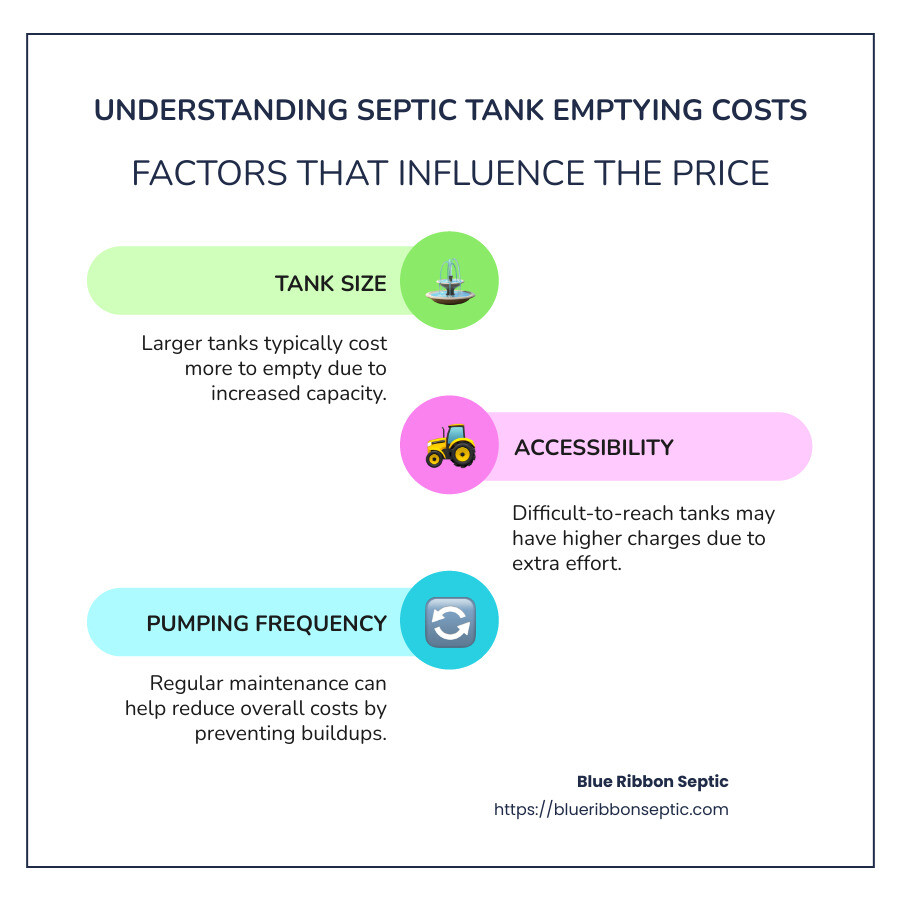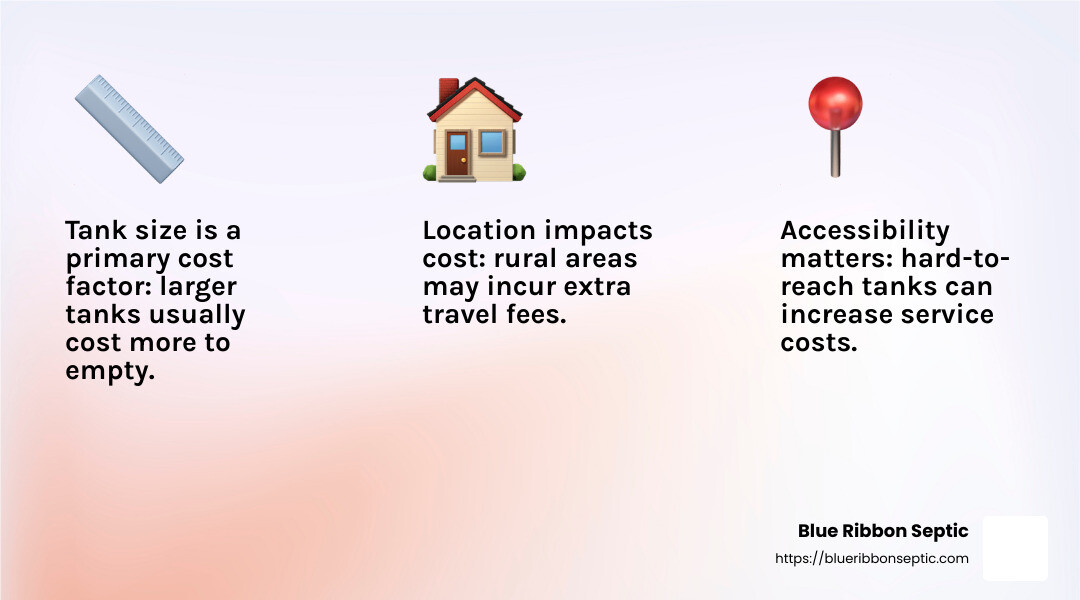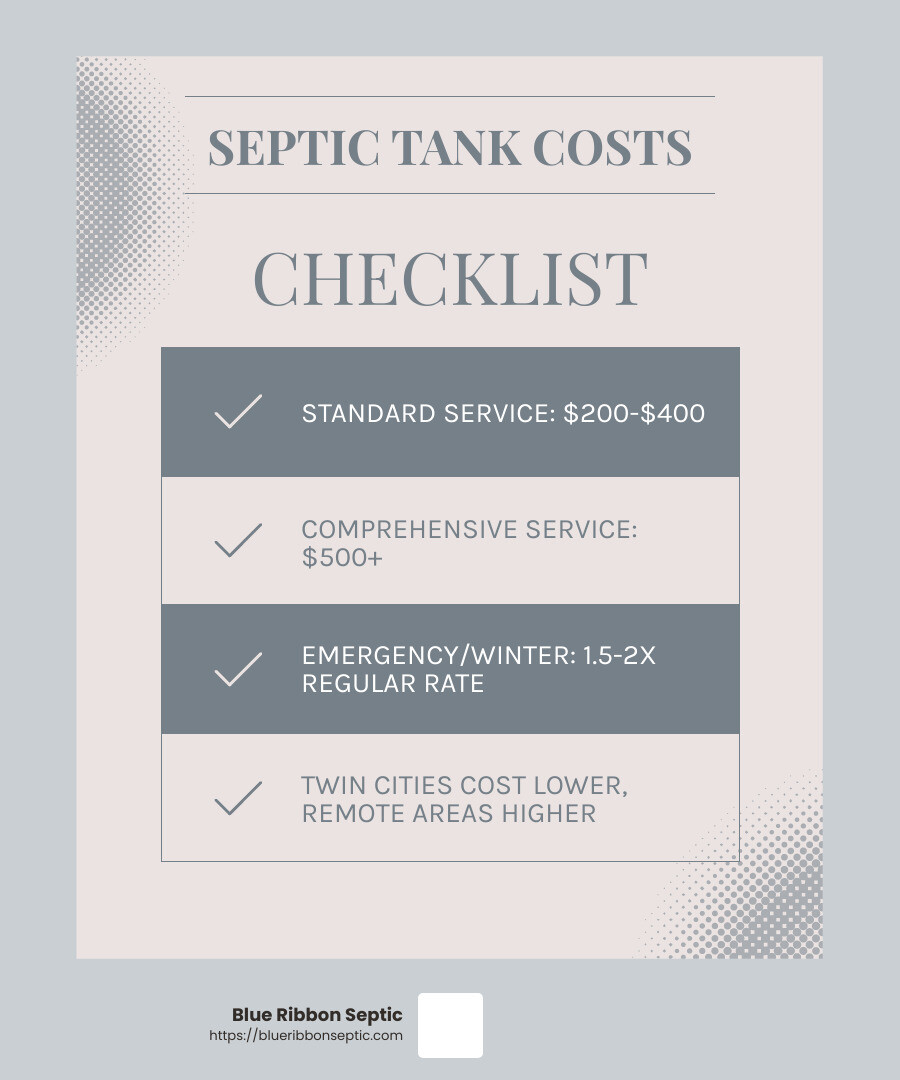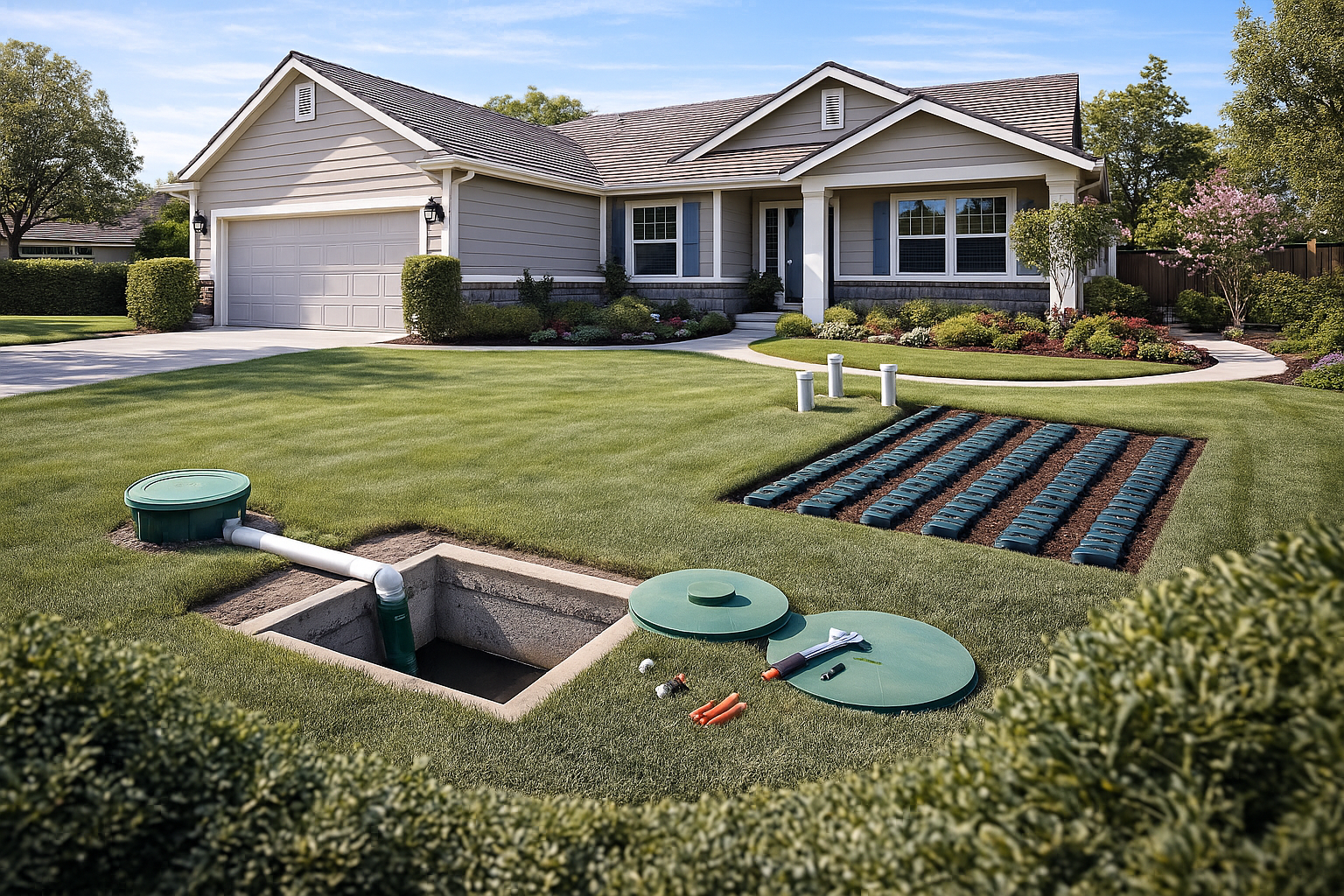When it comes to home maintenance, especially for rural and suburban homeowners, understanding septic tank emptying cost is critical. Your septic system plays a vital role in managing liquid waste and ensuring a safe, efficient household environment. Regular septic tank maintenance helps avoid sewage backups, system failure, and major repairs.
Quick Cost Overview
The average cost to empty a septic tank ranges from $255 to $600. Several factors affect this septic cleanout cost, including septic tank size, accessibility, pumping frequency, and location.
Knowing these cost factors can help you plan proactively and avoid expensive disruptions.
"As Brandon Fitzgerald, I’ve spent years working hands-on with septic systems, helping homeowners navigate issues like septic tank emptying and maintenance. I’m committed to making this process simple, clear, and stress-free."

Know Your Septic Tank Cost Terms
Before diving into specifics, familiarize yourself with related terms you might encounter when discussing or researching septic tank costs:
- New septic tank installation cost
- Septic tank cleaning cost
- Septic tank inspection cost
- DIY septic tank pumping risks
- Tank emptying and pump outs
- Cesspit emptying cost
- Septic draining cost
- Sewage tank emptying
- Garbage disposal effects on septic systems
Understanding these terms will help you assess quotes, ask the right questions, and avoid confusion when scheduling routine pumping or other services.
Key Factors Influencing Septic Tank Pumping Costs
1. Septic Tank Size
The size of your tank significantly impacts the price. Smaller tanks, like 750-gallon models, usually cost around $200–$300 to pump. Standard 1,000-gallon tanks range from $250–$350, while 1,250-gallon tanks cost $300–$400. Larger systems, like 1,500 gallons or more, can exceed $500.
While larger septic tanks are more expensive to service, they generally require less frequent pumping, especially during high-usage periods. That balance can help save money in the long term.
2. Accessibility and Tank Location
Hard-to-reach tanks cost more to pump. If your tank is buried deeply or under obstacles like driveways or landscaping, service providers may charge more due to labor costs and the need for specialized equipment.
Knowing your tank location in advance can help minimize additional fees for digging or uncovering lids.
3. Pumping Frequency
Most septic systems require routine pumping every 3–5 years. However, more frequent pumping may be needed if you have a smaller tank, use a garbage disposal heavily, or have a large household.
Neglecting your pumping frequency can lead to sludge buildup, clogged pipes, and eventually a failing drain field.
4. Additional Services
Here are some common add-ons that affect your total septic tank emptying cost:
- Filter cleaning helps keep solids out of your drain field and typically adds $50–$100.
- Septic inspections can identify cracks, leaks, or other issues, often adding $100–$200.
- Sewer line inspections, using camera tools to check for clogs or tree roots, may cost $250–$500.
- Bacteria additives cost around $50–$100 and can help break down waste if your system is struggling.
- Drain field inspection may run an extra $100–$200 and helps prevent system failure.
Investing in these services during a pump-out can prevent costly emergencies down the line.
5. Geographic Location and Seasonal Impact
Your location affects cost significantly. If you live in a rural area, you may pay more due to travel time. In urban zones, prices may fall on the lower end of the spectrum.
Seasonal demand also matters. Frozen ground in winter can complicate the pumping process, requiring extra labor and equipment—often pushing the cost to 1.5 or even 2 times the standard rate.

Average Septic Tank Pumping Cost Breakdown
On average, septic pumping for a standard 1,000-gallon tank costs between $200 and $400. If you include services like filter cleaning or an inspection, the total can rise to $500 or more. In emergency situations or during winter, that price may spike to $600–$800.
This cost is still significantly lower than replacing a drain line, repairing a failing drain field, or installing a new septic system, which can run $10,000 or more.

Case Study: Long-Term Cost Efficiency
Imagine a homeowner in a suburban area with a 1,000-gallon tank. They pump their septic tank every three years for around $300 per visit. Over 15 years, they spend about $1,500 on routine maintenance—far less than the $15,000 cost of replacing a damaged septic system.
By being proactive, they avoid sewage odors, standing water, and the high cost of septic tank failure.
Is Septic Tank Pumping Worth It?
Absolutely. Septic tank pumping is a cost-effective way to protect your home’s infrastructure. It helps:
- Prevent sewage backups
- Extend the life of your plumbing systems
- Reduce the risk of system failure
- Ensure proper flow to the leach field
- Avoid violating Environmental Protection Agency guidelines
In short, pump your septic tank before it becomes a problem.
Tips for Lowering Your Septic Tank Costs
- Know your tank location to avoid extra charges
- Use water efficiently to extend the time between pump-outs
- Only flush toilet paper—no wipes, napkins, or hygiene products
- Limit the use of food waste disposal units
- Keep a schedule for regular pumping
Good habits today lead to cost savings tomorrow.
Frequently Asked Questions (FAQ)
How much does septic tank pumping cost on average?
The cost to pump a septic tank varies depending on tank size, location, and season. Most homeowners spend between $200 and $600 per service.
How often should I have my tank pumped?
Most households should schedule routine pumping every 3–5 years. If you have a smaller tank or use a garbage disposal frequently, you may need more frequent pumping.
What are the signs that my septic tank is full?
Look for:
- Slow drains in sinks or tubs
- Gurgling pipes when flushing
- Standing water or soggy ground over the tank
- Unpleasant sewage odors inside or outside the home
- Backups in your plumbing system
These signs indicate it’s time to pump your septic tank.
Can I pump my septic tank myself?
DIY septic tank pumping is not recommended. You’ll need specialized equipment, protective gear, and knowledge of liquid effluent disposal. It’s safer and more efficient to hire professionals.
Does a larger tank mean lower long-term costs?
Yes. While larger tanks generally cost more to service, they need less frequent pumping, which can help you save money over time.
Conclusion
Taking care of your septic tank is about more than just avoiding mess—it's about protecting your property and budget. With consistent routine maintenance, you'll reduce the risk of system failure, eliminate sewage odors, and extend the life of your drain field and septic system.
At Blue Ribbon Septic, we provide honest, high-quality services without upselling. Whether you're in Auburn or surrounding areas, trust us to handle everything from septic tank cleaning and pump outs to real estate inspections.
Ready to protect your home and your wallet? Visit our Auburn Septic Pumping page to schedule your next service and keep your system running smoothly.






